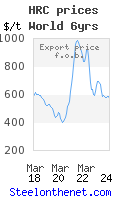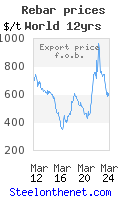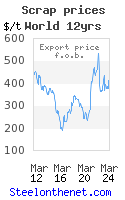Chinese export activity
Global crude steel production mid-way through 2017 was 4.5% higher than in the first 6 months of the previous year. Despite much talk about cuts in Chinese capacity, Chinese crude steel production grew by a marginally higher amount. The growth in Chinese production is attributed to the government-led infrastructure push which has maintained very strong demand levels from the construction sector, fuelling demand for products such as rebar and sections. Infrastructure demand does not appear to be weakening with Chinese crude steel production growth in June alone reaching 5.7%, significantly ahead of the rest of the world figure of 0.7%.
The strength of Chinese domestic demand has also had an impact on export levels. In addition to crude steel production growth of 4.6% in the first half of 2017, export volumes have reduced by more than 28% as product is diverted to the domestic market. This trend looks set to continue with the June figure alone reflecting a collapse in export volumes with levels down by nearly 38% year on year, albeit against a very strong June 2016 figure. Export volumes have been trending downwards, relative to the previous year, for the past 10 months.
This decrease in exports has not been seen uniformly across all products, however. It is clearly the products commonly used in the construction sector which have seen the largest decline with exports of hot rolled bars and flats down by 67%. In contrast, flat products have actually not seen much of a decline at all with exports of specific products growing year on year. Exports of CR, for example have grown by 30% and HDG is 4% higher than in the previous year.
A closer look at HDG, one of the products where exports have grown, indicates that Chinese producers have been targeting certain European markets. Shipments to Italy , the UK and Spain Vietnam
Despite the fact that Chinese exports levels are in decline China continues to fill the role of the world's main exporter, with levels more than double those of Japan
The text above was prepared by ISSB.
For a file showing Chinese exports split by product for the first half of the year, please visit ISSB for more information on the global steel industry.
Labels: china steel demand, chinese steel demand, Chinese steel exports, Chinese steel industry, ISSB, steel exports



